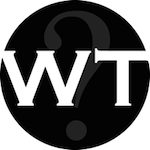ReactJS (also known as React) is what powers many of the most popular web sites — including Facebook, Instagram, Netflix, Reddit, and the New York Times. It provides a way for web developers to make reactive sites, meaning that they automatically update in response to changes to their data or user input. The idea of a reactive web site isn’t exactly new, but the way React manages updates to what you see in the browser is very different from how it was done prior to React.
But, I won’t go into the technical details here. I’ve been writing about and teaching React since 2017. I’ve taught it in at least 20 U.S. states, as well as in Canada, Europe, and Asia. Between 2017 and 2020. I racked up a lot of hotel points and airline miles to deliver 3-day and 5-day courses at some of the world’s largest companies. I’ve trained thousands more developers through my video course on Pluralsight as well as through the Nucamp coding bootcamp. I worked and consulted for several websites and apps built using React.
When face-to-face training ground to a halt as a result of the COVID-19 pandemic, I turned my attention to writing. In July 2020, I got an offer from Wiley Publishing to write a Beginning React book. As I looked at the available books about React and the most popular tutorials on the web, I discovered that many of them were out of date and incomplete, and others seemed like they were rushed or written by good programmers who were novices at writing technical books.
With years of teaching and writing about React and a dozen technical books under my belt, I knew that I could write a book about React that would be relevant for years and that would be helpful not just for getting beginners started but also as a reference for all of the experienced programmers I’ve trained over the years. The editors at Wiley agreed with my ideas and decided that the book would be better as a stand-alone book, rather than part of a series (such as the “Beginning …” series or the “For Dummies” series, for example).
With the outline approved, I started writing the book in August 2020 and worked on the first draft every day until April 2021. The original length of the book was to be around 580 pages. By the time I had finished my writing, it was more like 700. I think the final product, when it comes out in Q1 2022, will be about 640 pages, plus some online-only content that I’m working on about the very latest additions to React since the book was finalized. We were able to get fellow trainer and writer Rick Carlino to be the book’s technical editor, and his help and expertise was invaluable in finding all the tiny bugs that my eyes missed. From April to November 2021, the book went through the process of technical editing, copyediting, proofreading, design, and layout. The cover image was recently released, and I feel like the designer knows me.
The book is available now for presale through everywhere you expect to be able to find books. You can find a list of places to buy it on the book’s website, https://www.reactjsfoundations.com. The website also contains every code listing from the book, and I’ll be updating it with blog posts, links to additional resources, and (heaven forbid) corrections over the coming months.
I’m extremely proud of this book. If you check it out, please let me know what you think of it and if it’s helpful for you. Please also consider rating and reviewing it online (on Amazon, Barnes and Noble, Goodreads, Twitter, etc).

